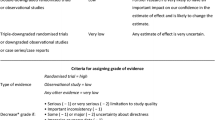Abstract
Background
Paraesophageal hernia repairs (PEHRs) have high rates of radiographic recurrence, with some patients requiring repeat operation. This study characterizes patients who underwent PEHR to identify the factors associated with postoperative symptom improvement and radiographic recurrence. We furthermore use propensity score matching to compare patients undergoing initial and reoperative PEHR to identify the factors predictive of recurrence or need for reoperation.
Methods
After IRB approval, patients who underwent PEHR at a tertiary care center between January 2018 and December 2022 were identified. Patient characteristics, preoperative imaging, operative findings, and postoperative outcomes were recorded. A computational generalization of inverse propensity score weight was then used to construct populations of initial and redo PEHR patients with similar covariate distributions.
Results
A total of 244 patients underwent PEHR (78.7% female, mean age 65.4 ± 12.3 years). Most repairs were performed with crural closure (81.4%) and fundoplication (71.7%) with 14.2% utilizing mesh. Postoperatively, 76.5% of patients had subjective symptom improvement and of 157 patients with postoperative imaging, 52.9% had evidence of radiographic recurrence at a mean follow-up of 10.4 ± 13.6 months. Only 4.9% of patients required a redo operation. Hernia type, crural closure, fundoplication, and mesh usage were not predictors of radiographic recurrence or symptom improvement (P > 0.05). Propensity weight score analysis of 50 redo PEHRs compared to a matched cohort of 194 initial operations revealed lower rates of postoperative symptom improvement (P < 0.05) but no differences in need for revision, complication rates, ED visits, or readmissions.
Conclusions
Most PEHR patients have symptomatic improvement with minimal complications and reoperations despite frequent radiographic recurrence. Hernia type, crural closure, fundoplication, and mesh usage were not significantly associated with recurrence or symptom improvement. Compared to initial PEHR, reoperative PEHRs had lower rates of symptom improvement but similar rates of recurrence, complications, and need for reoperation.

Similar content being viewed by others
References
Mazer L, Telem DA (2021) Paraesophageal hernia: current management. Adv Surg 55:109–122. https://doi.org/10.1016/j.yasu.2021.05.008
Oelschlager BK, Pellegrini CA, Hunter JG, Brunt ML, Soper NJ, Sheppard BC, Polissar NL, Neradilek MB, Mitsumori LM, Rohrmann CA, Swanstrom LL (2011) Biologic prosthesis to prevent recurrence after laparoscopic paraesophageal hernia repair: long-term follow-up from a multicenter, prospective, randomized trial. J Am Coll Surg 213:461–468. https://doi.org/10.1016/J.JAMCOLLSURG.2011.05.017
Rogers MP, Velanovich V, DuCoin C (2021) Narrative review of management controversies for paraesophageal hernia. J Thorac Dis 13:4476–4483. https://doi.org/10.21037/JTD-21-720
Kohn GP, Price RR, Demeester SR, Zehetner J, Muensterer OJ, Awad Z, Mittal SK, Richardson WS, Stefanidis D, Fanelli RD (2013) Guidelines for the management of hiatal hernia. Surg Endosc 27:4409–4428. https://doi.org/10.1007/S00464-013-3173-3
Solomon D, Bekhor E, Kashtan H (2021) Paraesophageal hernia: to fundoplicate or not? Ann Transl Med 9:902–902. https://doi.org/10.21037/ATM.2020.03.106
Angeramo CA, Schlottmann F (2022) laparoscopic paraesophageal hernia repair: to mesh or not to mesh. Systematic review and meta-analysis. Ann Surg 275:67–72. https://doi.org/10.1097/SLA.0000000000004913
Korwar V, Adjepong S, Pattar J, Sigurdsson A (2019) Biological mesh repair of paraesophageal hernia: an analysis of our outcomes. J Laparoendosc Adv Surg Tech A 29:1446–1450. https://doi.org/10.1089/LAP.2019.0423
Addo A, Carmichael D, Chan K, Broda A, Dessify B, Mekel G, Gabrielsen JD, Petrick AT, Parker DM (2023) Laparoscopic revision paraesophageal hernia repair: a 16-year experience at a single institution. Surg Endosc 37:624–630. https://doi.org/10.1007/S00464-022-09359-8
Addo AJ, Fatunmbi AM, Ramdeen SL, Broda A, Obradovic V, Petrick AT, Parker DM (2022) Revision paraesophageal hernia repair outcomes in patients with typical and atypical reflux. Surg Endosc 1:1–7. https://doi.org/10.1007/S00464-022-09635-7/TABLES/5
Lidor AO, Kawaji Q, Stem M, Fleming RM, Schweitzer MA, Steele KE, Marohn MR (2013) Defining recurrence after paraesophageal hernia repair: correlating symptoms and radiographic findings. Surg (United States). https://doi.org/10.1016/j.surg.2013.03.015
Lidor AO, Steele KE, Stem M, Fleming RM, Schweitzer MA, Marohn MR (2015) Long-term quality of life and risk factors for recurrence after laparoscopic repair of paraesophageal hernia. JAMA Surg 150:424–431. https://doi.org/10.1001/JAMASURG.2015.25
Oelschlager BK, Petersen RP, Brunt LM, Soper NJ, Sheppard BC, Mitsumori L, Rohrmann C, Swanstrom LL, Pellegrini CA (2012) Laparoscopic paraesophageal hernia repair: defining long-term clinical and anatomic outcomes. J Gastrointest Surg 16:453–459. https://doi.org/10.1007/S11605-011-1743-Z/TABLES/5
Dallemagne B, Kohnen L, Perretta S, Weerts J, Markiewicz S, Jehaes C (2011) Laparoscopic repair of paraesophageal hernia. Long-term follow-up reveals good clinical outcome despite high radiological recurrence rate. Ann Surg 253:291–296. https://doi.org/10.1097/SLA.0B013E3181FF44C0
Carrott PW, Hong J, Kuppusamy M, Koehler RP, Low DE (2012) Clinical ramifications of giant paraesophageal hernias are underappreciated: making the case for routine surgical repair. Ann Thorac Surg. https://doi.org/10.1016/j.athoracsur.2012.04.058
Andolfi C, Plana A, Furno S, Fisichella PM (2017) Paraesophageal hernia and reflux prevention: is one fundoplication better than the other? World J Surg 41:2573–2582. https://doi.org/10.1007/s00268-017-4040-5
Huerta CT, Plymale M, Barrett P, Davenport DL, Roth JS (2019) Long-term efficacy of laparoscopic nissen versus toupet fundoplication for the management of types III and IV hiatal hernias. Surg Endosc 33:2895–2900. https://doi.org/10.1007/S00464-018-6589-Y/TABLES/2
Funding
Mr. Aditya Jog received research funding from the Harrison/Measey Scholars program.
Author information
Authors and Affiliations
Corresponding author
Ethics declarations
Disclosures
Dr. Shao receives consulting honoraria from Abbvie Inc. Drs. Strauss, Keele, Triggs, and Altieri have no conflict of interest to disclose. Mr. Jog, Mr. Um, and Ms. Kaur have no conflict of interest or financial ties to disclose.
Additional information
Publisher's Note
Springer Nature remains neutral with regard to jurisdictional claims in published maps and institutional affiliations.
Rights and permissions
Springer Nature or its licensor (e.g. a society or other partner) holds exclusive rights to this article under a publishing agreement with the author(s) or other rightsholder(s); author self-archiving of the accepted manuscript version of this article is solely governed by the terms of such publishing agreement and applicable law.
About this article
Cite this article
Jog, A., Strauss Starling, A.L., Kaur, I. et al. Paraesophageal hernia recurrence following repair: making the case for reoperative surgery in a propensity-matched cohort. Surg Endosc (2024). https://doi.org/10.1007/s00464-024-10833-8
Received:
Accepted:
Published:
DOI: https://doi.org/10.1007/s00464-024-10833-8




